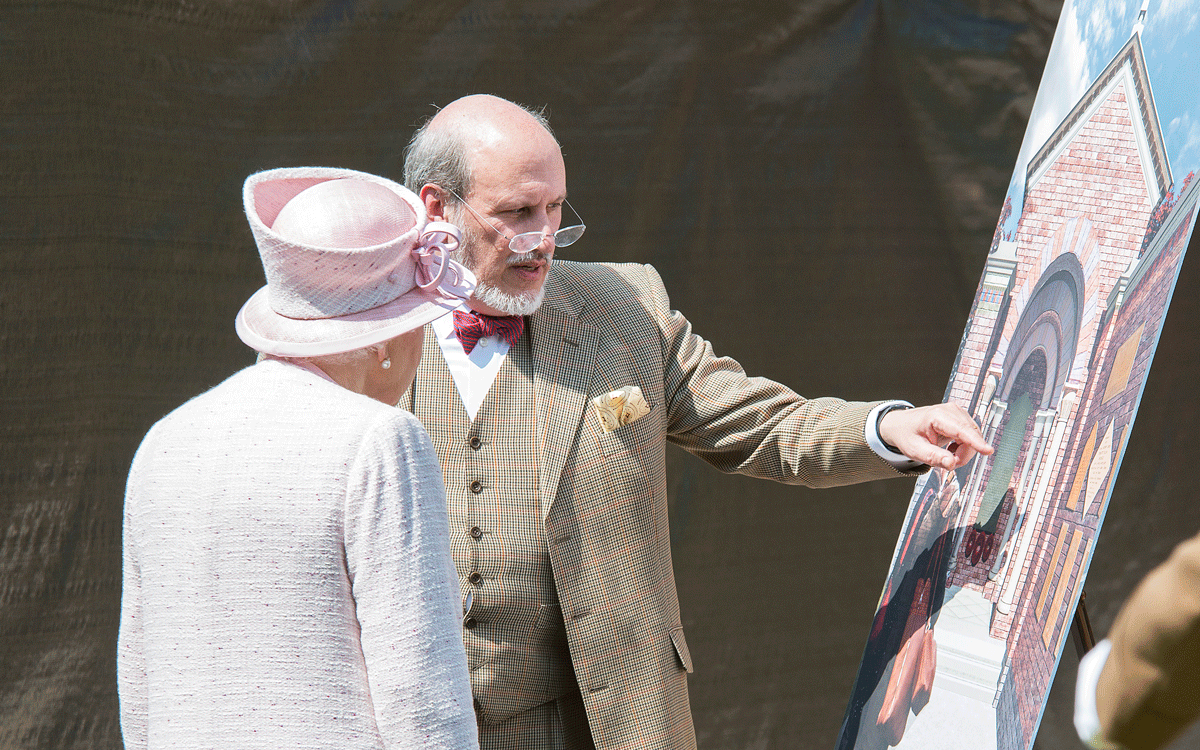
John Simpson outlines the design of the new chapel and memorial garden to Her Majesty the Queen, Larkhill, Wiltshire, United Kingdom
ROYAL ARTILLERY MEMORIAL WALLGarrison Church of St Alban the Martyr
Larkhill, Wiltshire, UK
John Simpson Architects designed a Tercentenary Chapel and Cloister for the Royal Artillery at their Regimental Church in Larkhill, to be opened to correspond with the 300th anniversary of The Royal Artillery in 2016. The project was erected to house a large number of brass and stone commemorative plaques which, abandoned since WWII, when the original church was destroyed by a bomb in 1944, tell a distinguished story of the regiment and its history.
The cloister was designed to replicate a part of the old Regimental Church in Woolwich, where Thomas Wyatt had ingeniously integrated the regimental colours into the design. The location was particularly appropriate given that the design of Larkhill Church was also heavily influenced by that at Woolwich. In order to make this work, brick choice was extremely important. To this end, blue bricks were especially commissioned to replicate those used by Wyatt at Woolwich. A final flourish can be seen in the unique column capitals that flank the chapel. These are designed to evoke a grenade explosion, referring to the Regimental Badge.
The Chapel’s Foundation Stone was laid by HM the Queen, Captain-General of the Royal Regiment, in May 2016. The project was completed, consecrated and opened later that year for the annual St Barbara’s Day Service, winning the Salisbury Civic Society Award shortly afterwards.
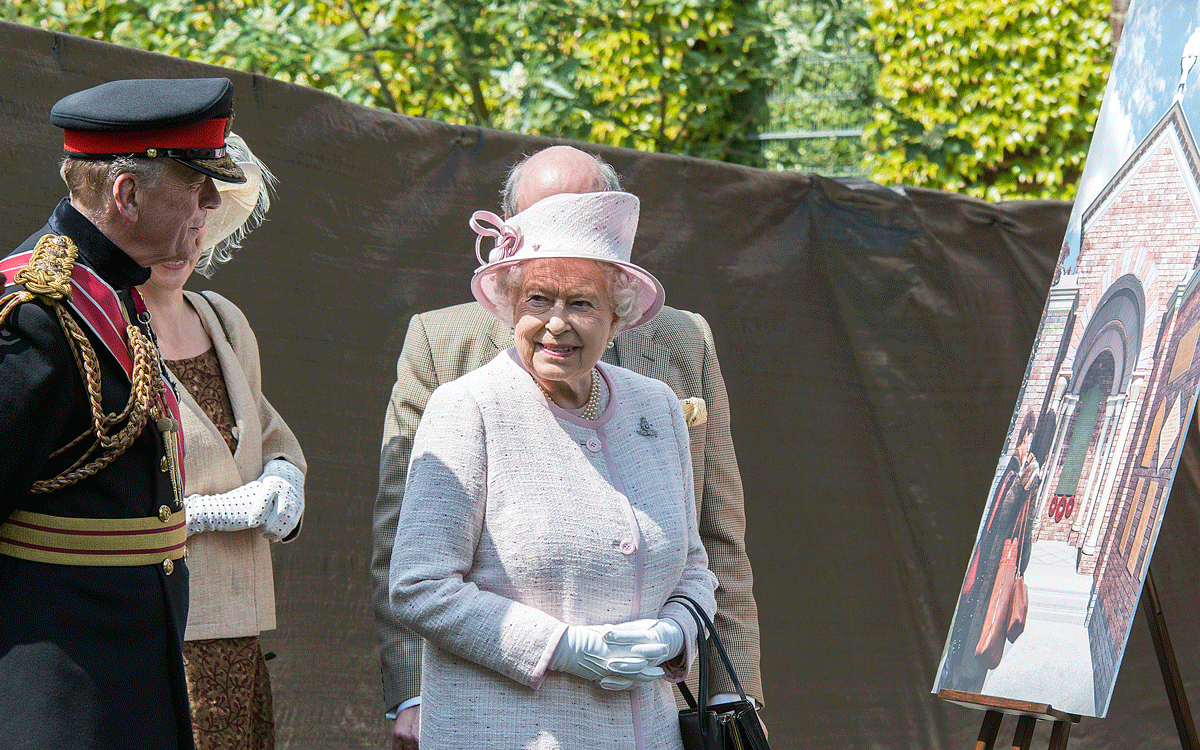
Her Majesty The Queen at Garrison Church of St Alban the Martyr, Larkhill, Wiltshire, United Kingdom
ROYAL ARTILLERY MEMORIAL WALLGarrison Church of St Alban the Martyr
Larkhill, Wiltshire, UK
John Simpson Architects designed a Tercentenary Chapel and Cloister for the Royal Artillery at their Regimental Church in Larkhill, to be opened to correspond with the 300th anniversary of The Royal Artillery in 2016. The project was erected to house a large number of brass and stone commemorative plaques which, abandoned since WWII, when the original church was destroyed by a bomb in 1944, tell a distinguished story of the regiment and its history.
The cloister was designed to replicate a part of the old Regimental Church in Woolwich, where Thomas Wyatt had ingeniously integrated the regimental colours into the design. The location was particularly appropriate given that the design of Larkhill Church was also heavily influenced by that at Woolwich. In order to make this work, brick choice was extremely important. To this end, blue bricks were especially commissioned to replicate those used by Wyatt at Woolwich. A final flourish can be seen in the unique column capitals that flank the chapel. These are designed to evoke a grenade explosion, referring to the Regimental Badge.
The Chapel’s Foundation Stone was laid by HM the Queen, Captain-General of the Royal Regiment, in May 2016. The project was completed, consecrated and opened later that year for the annual St Barbara’s Day Service, winning the Salisbury Civic Society Award shortly afterwards.
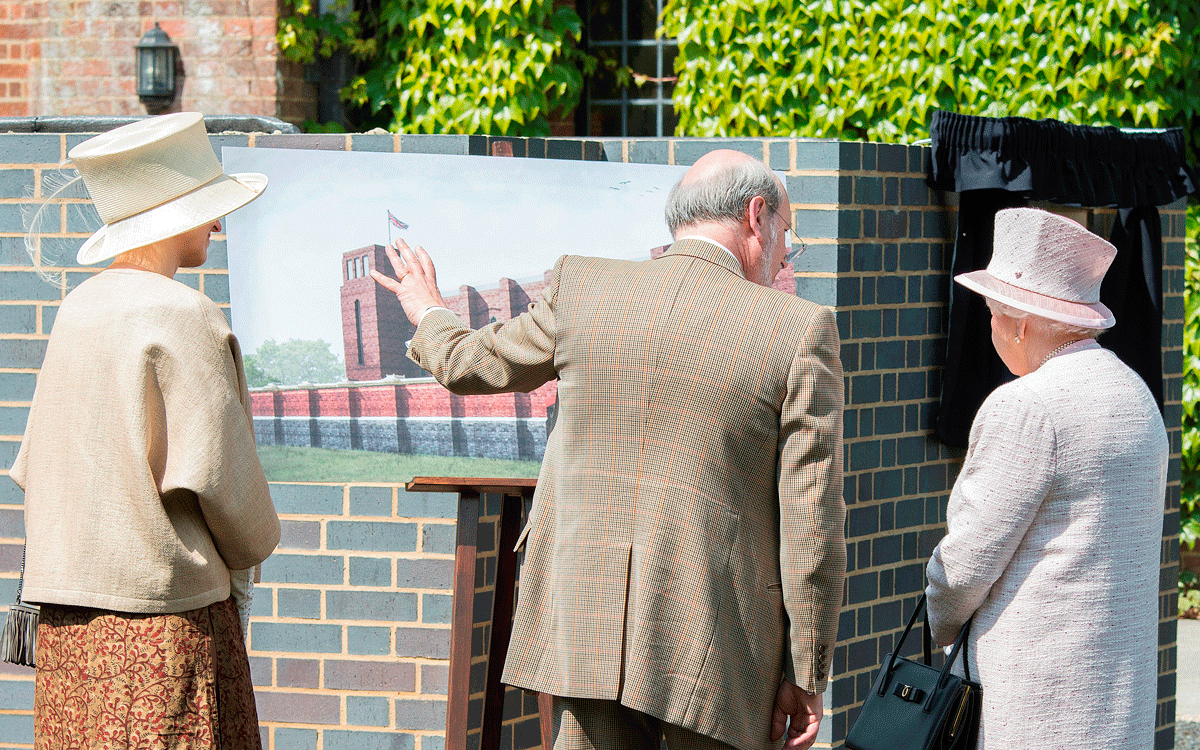
Her Majesty with John Simpson and Joanna Wachowiak, at Garrison Church of St Alban the Martyr, Larkhill, Wiltshire, United Kingdom
ROYAL ARTILLERY MEMORIAL WALLGarrison Church of St Alban the Martyr
Larkhill, Wiltshire, UK
John Simpson Architects designed a Tercentenary Chapel and Cloister for the Royal Artillery at their Regimental Church in Larkhill, to be opened to correspond with the 300th anniversary of The Royal Artillery in 2016. The project was erected to house a large number of brass and stone commemorative plaques which, abandoned since WWII, when the original church was destroyed by a bomb in 1944, tell a distinguished story of the regiment and its history.
The cloister was designed to replicate a part of the old Regimental Church in Woolwich, where Thomas Wyatt had ingeniously integrated the regimental colours into the design. The location was particularly appropriate given that the design of Larkhill Church was also heavily influenced by that at Woolwich. In order to make this work, brick choice was extremely important. To this end, blue bricks were especially commissioned to replicate those used by Wyatt at Woolwich. A final flourish can be seen in the unique column capitals that flank the chapel. These are designed to evoke a grenade explosion, referring to the Regimental Badge.
The Chapel’s Foundation Stone was laid by HM the Queen, Captain-General of the Royal Regiment, in May 2016. The project was completed, consecrated and opened later that year for the annual St Barbara’s Day Service, winning the Salisbury Civic Society Award shortly afterwards.
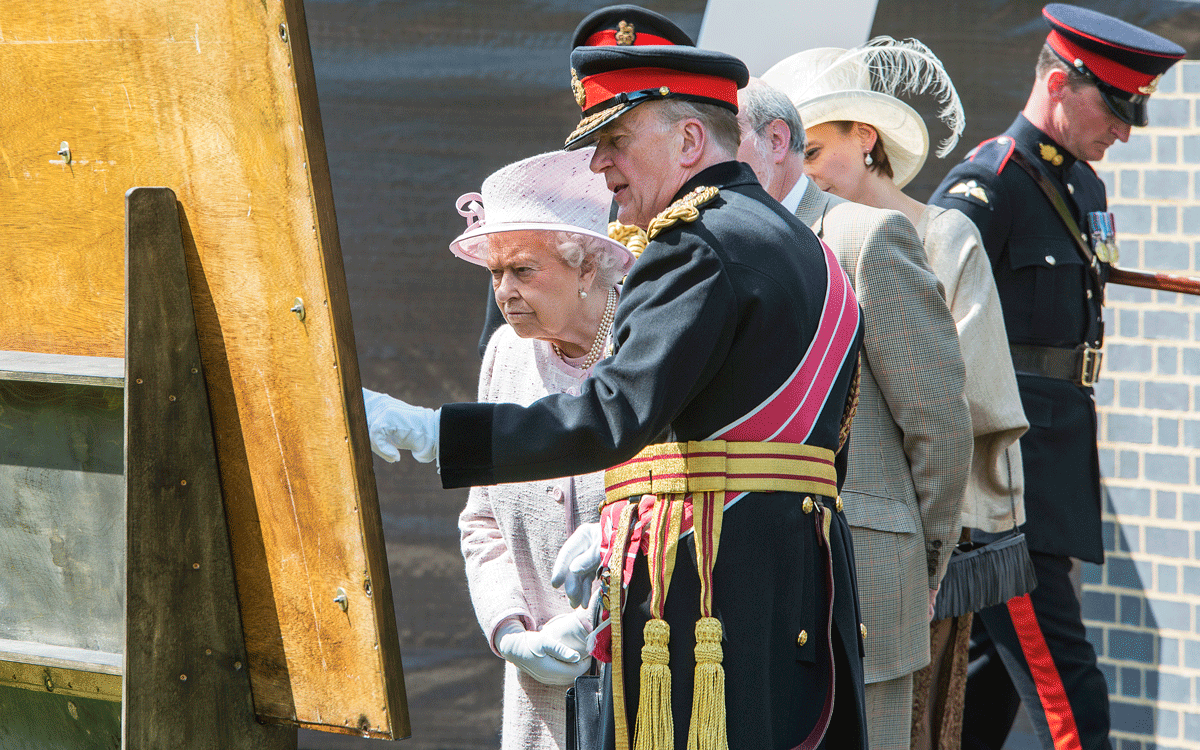
Master Gunner, Sir Timothy Grenville-Chapman with Her Majesty The Queen, Larkhill, Wiltshire, United Kingdom
ROYAL ARTILLERY MEMORIAL WALLGarrison Church of St Alban the Martyr
Larkhill, Wiltshire, UK
John Simpson Architects designed a Tercentenary Chapel and Cloister for the Royal Artillery at their Regimental Church in Larkhill, to be opened to correspond with the 300th anniversary of The Royal Artillery in 2016. The project was erected to house a large number of brass and stone commemorative plaques which, abandoned since WWII, when the original church was destroyed by a bomb in 1944, tell a distinguished story of the regiment and its history.
The cloister was designed to replicate a part of the old Regimental Church in Woolwich, where Thomas Wyatt had ingeniously integrated the regimental colours into the design. The location was particularly appropriate given that the design of Larkhill Church was also heavily influenced by that at Woolwich. In order to make this work, brick choice was extremely important. To this end, blue bricks were especially commissioned to replicate those used by Wyatt at Woolwich. A final flourish can be seen in the unique column capitals that flank the chapel. These are designed to evoke a grenade explosion, referring to the Regimental Badge.
The Chapel’s Foundation Stone was laid by HM the Queen, Captain-General of the Royal Regiment, in May 2016. The project was completed, consecrated and opened later that year for the annual St Barbara’s Day Service, winning the Salisbury Civic Society Award shortly afterwards.
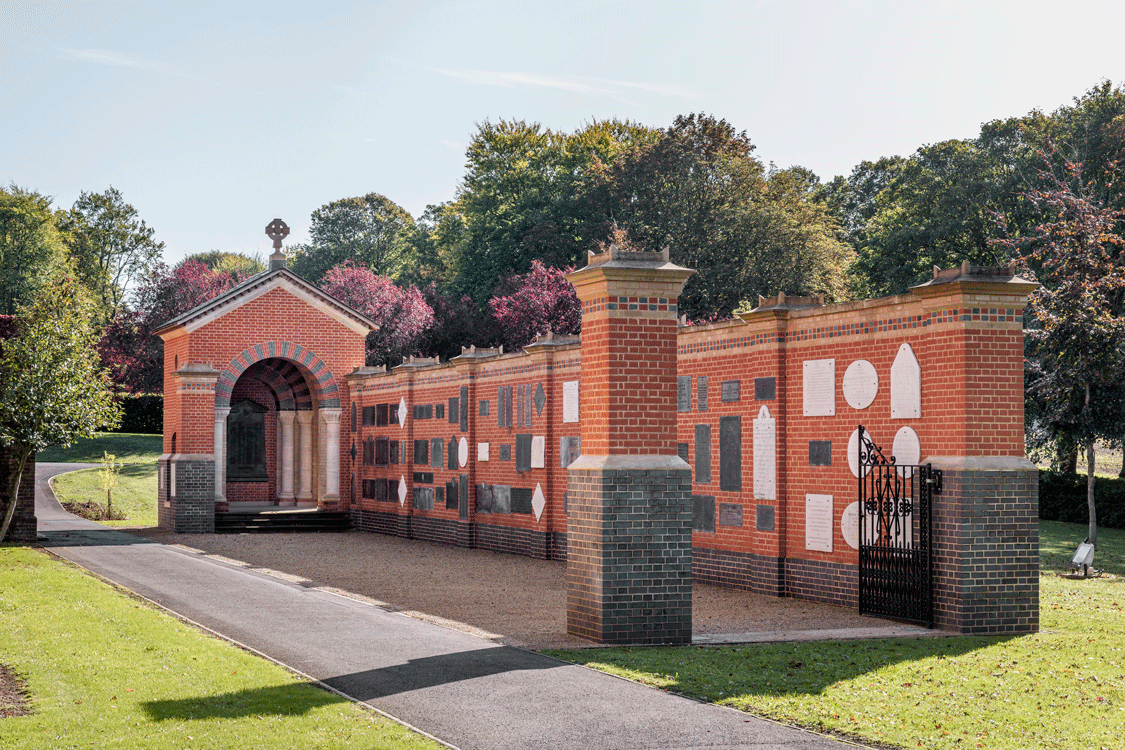
General view of the Royal Artillery Memorial, Larkhill, Wiltshire, United Kingdom
ROYAL ARTILLERY MEMORIAL WALLGarrison Church of St Alban the Martyr
Larkhill, Wiltshire, UK
John Simpson Architects designed a Tercentenary Chapel and Cloister for the Royal Artillery at their Regimental Church in Larkhill, to be opened to correspond with the 300th anniversary of The Royal Artillery in 2016. The project was erected to house a large number of brass and stone commemorative plaques which, abandoned since WWII, when the original church was destroyed by a bomb in 1944, tell a distinguished story of the regiment and its history.
The cloister was designed to replicate a part of the old Regimental Church in Woolwich, where Thomas Wyatt had ingeniously integrated the regimental colours into the design. The location was particularly appropriate given that the design of Larkhill Church was also heavily influenced by that at Woolwich. In order to make this work, brick choice was extremely important. To this end, blue bricks were especially commissioned to replicate those used by Wyatt at Woolwich. A final flourish can be seen in the unique column capitals that flank the chapel. These are designed to evoke a grenade explosion, referring to the Regimental Badge.
The Chapel’s Foundation Stone was laid by HM the Queen, Captain-General of the Royal Regiment, in May 2016. The project was completed, consecrated and opened later that year for the annual St Barbara’s Day Service, winning the Salisbury Civic Society Award shortly afterwards.
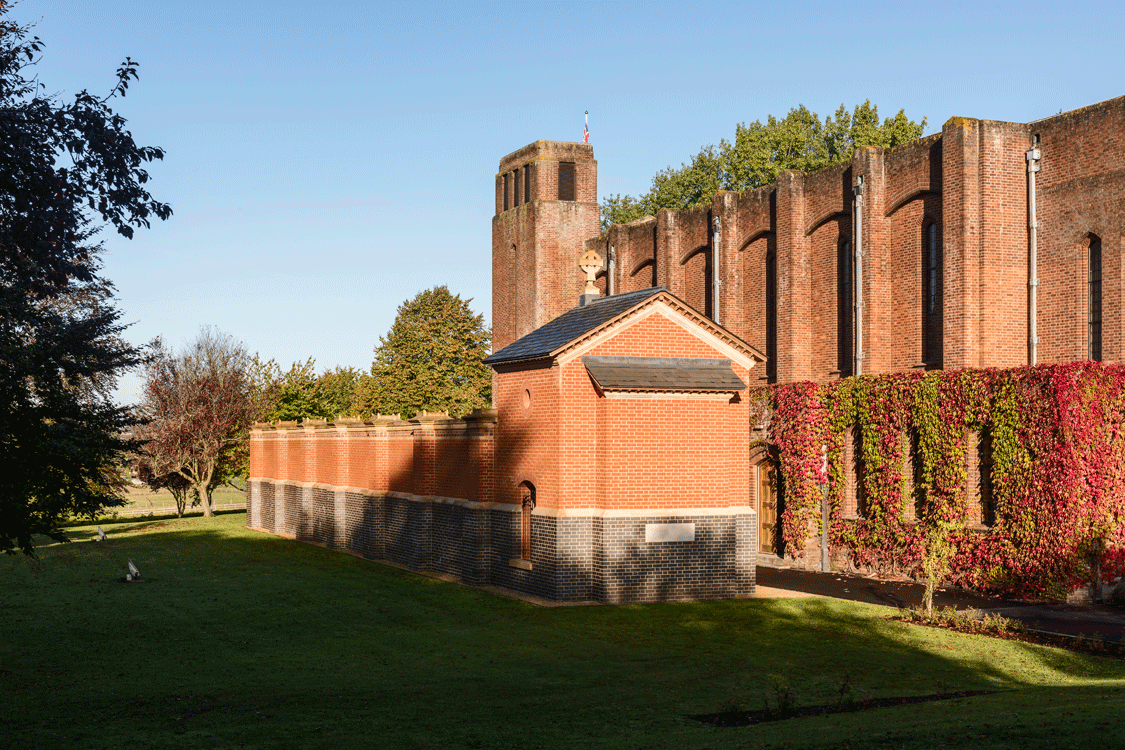
General view of the back of the Royal Artillery Memorial, Larkhill, Wiltshire, United Kingdom
ROYAL ARTILLERY MEMORIAL WALLGarrison Church of St Alban the Martyr
Larkhill, Wiltshire, UK
John Simpson Architects designed a Tercentenary Chapel and Cloister for the Royal Artillery at their Regimental Church in Larkhill, to be opened to correspond with the 300th anniversary of The Royal Artillery in 2016. The project was erected to house a large number of brass and stone commemorative plaques which, abandoned since WWII, when the original church was destroyed by a bomb in 1944, tell a distinguished story of the regiment and its history.
The cloister was designed to replicate a part of the old Regimental Church in Woolwich, where Thomas Wyatt had ingeniously integrated the regimental colours into the design. The location was particularly appropriate given that the design of Larkhill Church was also heavily influenced by that at Woolwich. In order to make this work, brick choice was extremely important. To this end, blue bricks were especially commissioned to replicate those used by Wyatt at Woolwich. A final flourish can be seen in the unique column capitals that flank the chapel. These are designed to evoke a grenade explosion, referring to the Regimental Badge.
The Chapel’s Foundation Stone was laid by HM the Queen, Captain-General of the Royal Regiment, in May 2016. The project was completed, consecrated and opened later that year for the annual St Barbara’s Day Service, winning the Salisbury Civic Society Award shortly afterwards.
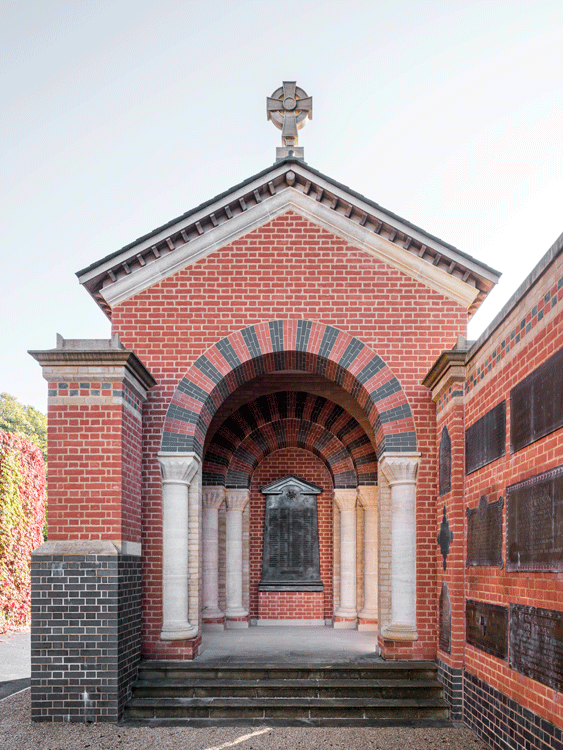
View of the chapel of the Royal Artillery Memorial, Larkhill, Wiltshire, United Kingdom
ROYAL ARTILLERY MEMORIAL WALLGarrison Church of St Alban the Martyr
Larkhill, Wiltshire, UK
John Simpson Architects designed a Tercentenary Chapel and Cloister for the Royal Artillery at their Regimental Church in Larkhill, to be opened to correspond with the 300th anniversary of The Royal Artillery in 2016. The project was erected to house a large number of brass and stone commemorative plaques which, abandoned since WWII, when the original church was destroyed by a bomb in 1944, tell a distinguished story of the regiment and its history.
The cloister was designed to replicate a part of the old Regimental Church in Woolwich, where Thomas Wyatt had ingeniously integrated the regimental colours into the design. The location was particularly appropriate given that the design of Larkhill Church was also heavily influenced by that at Woolwich. In order to make this work, brick choice was extremely important. To this end, blue bricks were especially commissioned to replicate those used by Wyatt at Woolwich. A final flourish can be seen in the unique column capitals that flank the chapel. These are designed to evoke a grenade explosion, referring to the Regimental Badge.
The Chapel’s Foundation Stone was laid by HM the Queen, Captain-General of the Royal Regiment, in May 2016. The project was completed, consecrated and opened later that year for the annual St Barbara’s Day Service, winning the Salisbury Civic Society Award shortly afterwards.
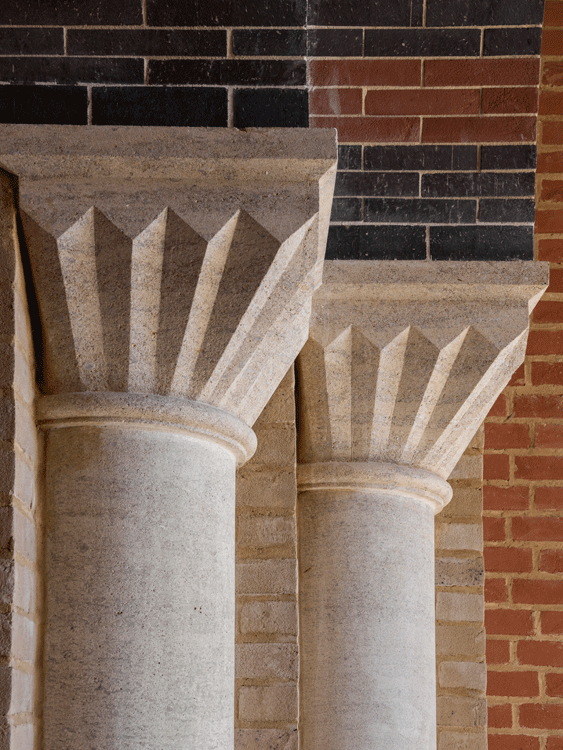
Capital detail of Royal Artillery Memorial Wall at Garrison Church of St Alban the Martyr, Larkhill, Wiltshire, United Kingdom
ROYAL ARTILLERY MEMORIAL WALLGarrison Church of St Alban the Martyr
Larkhill, Wiltshire, UK
John Simpson Architects designed a Tercentenary Chapel and Cloister for the Royal Artillery at their Regimental Church in Larkhill, to be opened to correspond with the 300th anniversary of The Royal Artillery in 2016. The project was erected to house a large number of brass and stone commemorative plaques which, abandoned since WWII, when the original church was destroyed by a bomb in 1944, tell a distinguished story of the regiment and its history.
The cloister was designed to replicate a part of the old Regimental Church in Woolwich, where Thomas Wyatt had ingeniously integrated the regimental colours into the design. The location was particularly appropriate given that the design of Larkhill Church was also heavily influenced by that at Woolwich. In order to make this work, brick choice was extremely important. To this end, blue bricks were especially commissioned to replicate those used by Wyatt at Woolwich. A final flourish can be seen in the unique column capitals that flank the chapel. These are designed to evoke a grenade explosion, referring to the Regimental Badge.
The Chapel’s Foundation Stone was laid by HM the Queen, Captain-General of the Royal Regiment, in May 2016. The project was completed, consecrated and opened later that year for the annual St Barbara’s Day Service, winning the Salisbury Civic Society Award shortly afterwards.